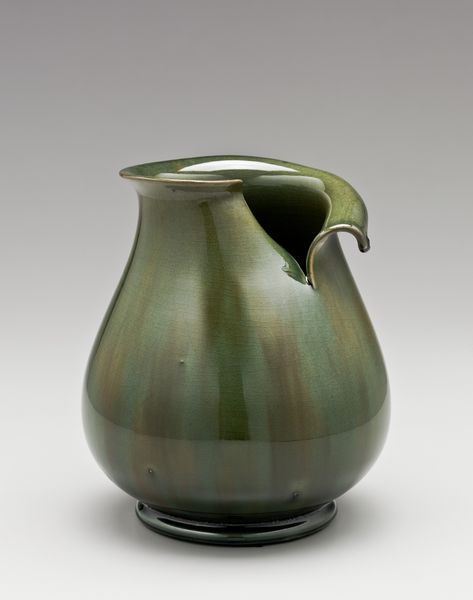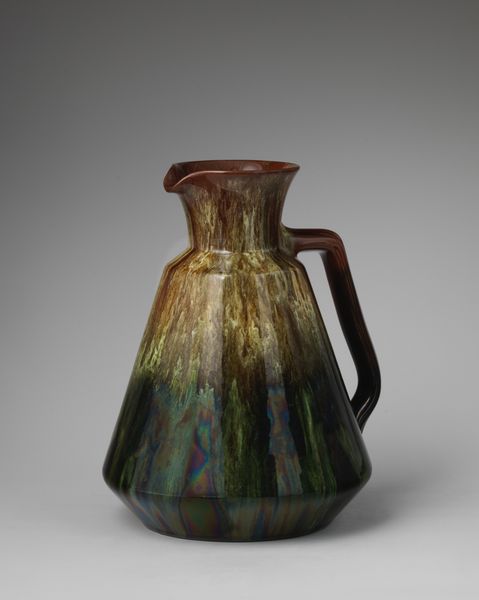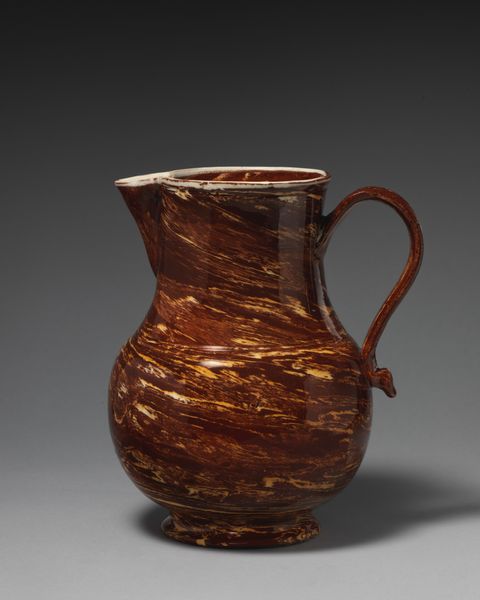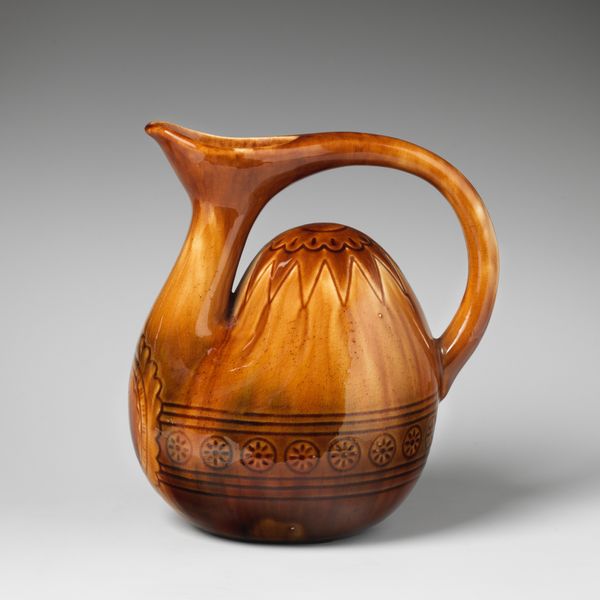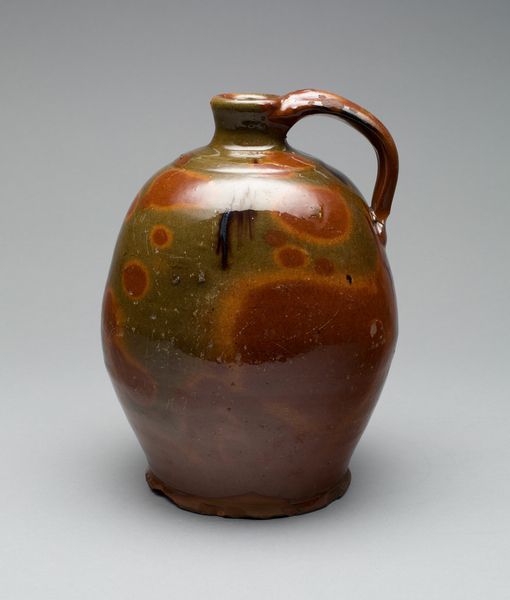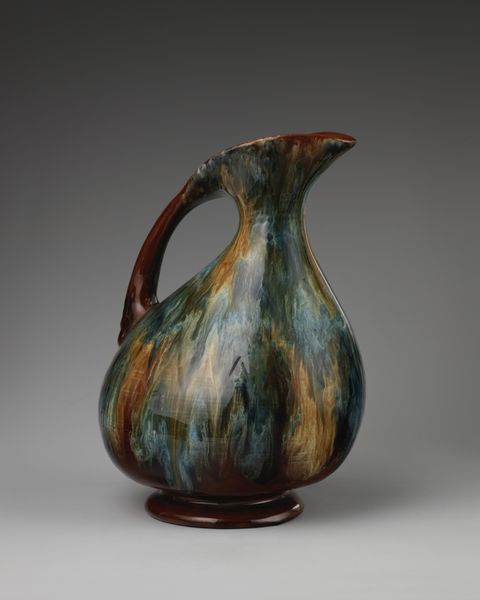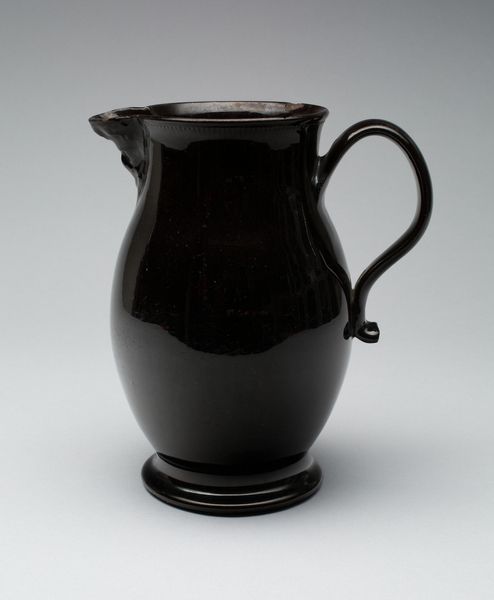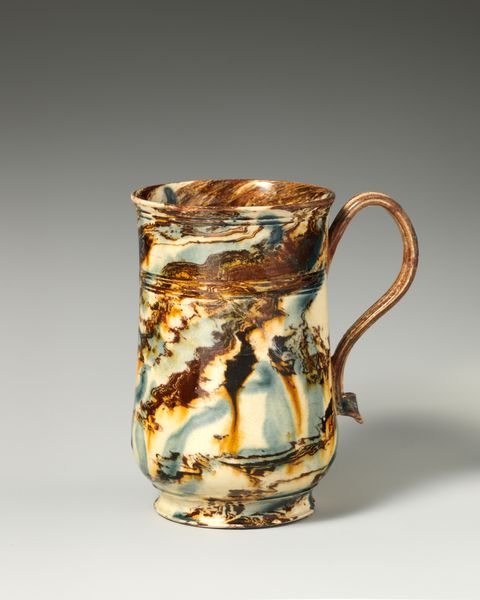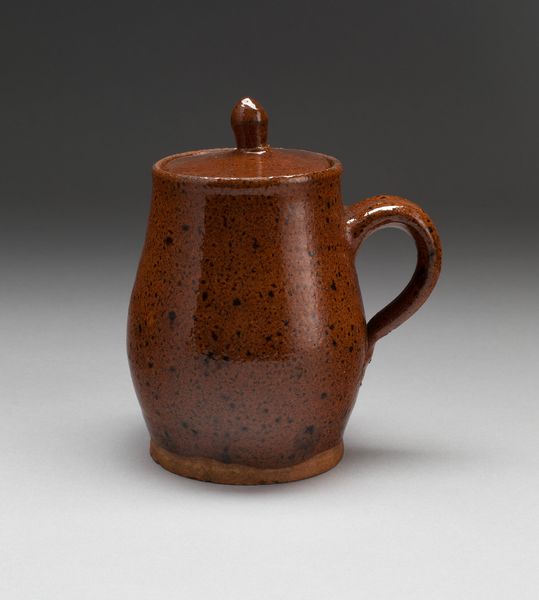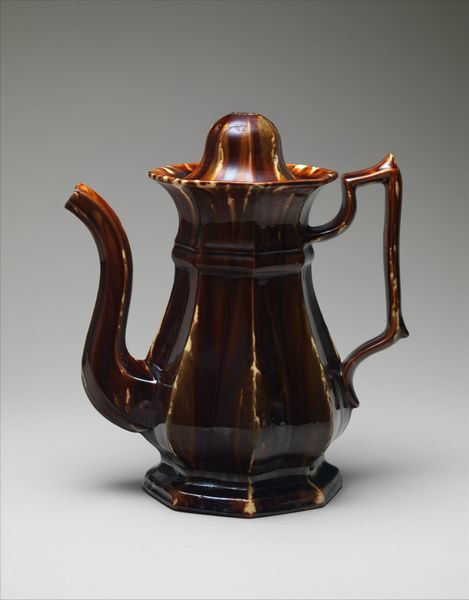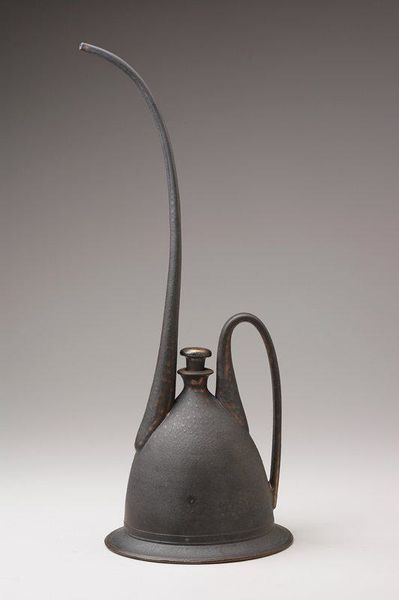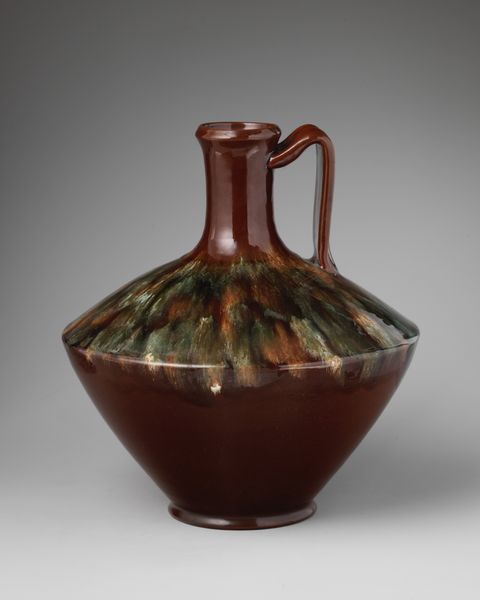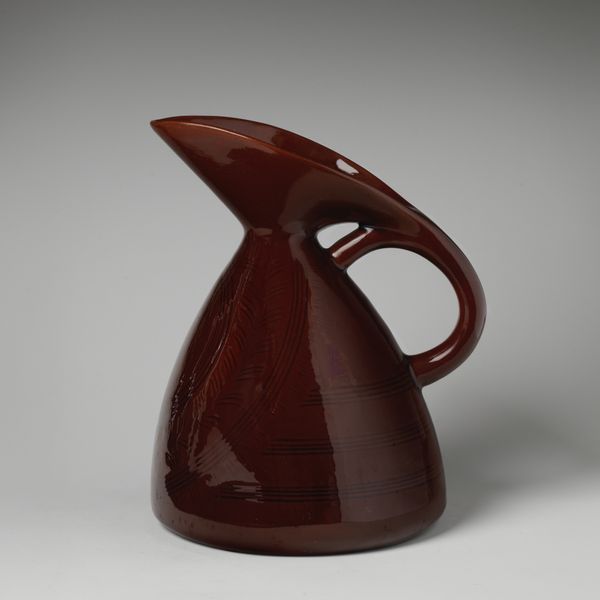
ceramic, wood
#
arts-&-crafts-movement
#
ceramic
#
wood
#
decorative-art
Dimensions: 19.4 × 15.9 × 14 cm (7 5/8 × 6 1/4 × 5 1/2 in.)
Copyright: Public Domain
Editor: Right now, we're looking at "Pitcher," a ceramic piece created around 1880 by Christopher Dresser, displayed at the Art Institute of Chicago. It's got this really unusual silhouette, very smooth and organic. What stands out to you as we consider its historical context? Curator: Well, this pitcher exemplifies the Arts and Crafts movement's broader challenge to industrialization and its aesthetic values. Consider the social landscape: mass production was becoming the norm, and figures like Dresser advocated for handcrafted quality and design that integrated art into everyday life. How does that awareness of socio-economic context change your interpretation? Editor: I see what you mean. Knowing it’s a reaction against mass production gives the pitcher’s simplicity a whole new layer. So it wasn’t just about aesthetics, but about values? Curator: Exactly! The Arts and Crafts movement saw beauty and utility as intertwined, believing well-designed objects could uplift society. A piece like this isn’t just functional; it’s a statement about labor, skill, and the integrity of materials, pushing against a system that prioritized profit over craftsmanship. It becomes a potent political object in its own way. Does understanding this social and political positioning change your initial sense of the piece? Editor: Definitely. At first, I only saw a cool pitcher, but now I appreciate the historical argument it quietly makes about society and how we value making. Curator: It’s a powerful reminder of how art is never created in a vacuum, and how even the most humble object can carry profound meaning when we understand its historical place.
Comments
No comments
Be the first to comment and join the conversation on the ultimate creative platform.

